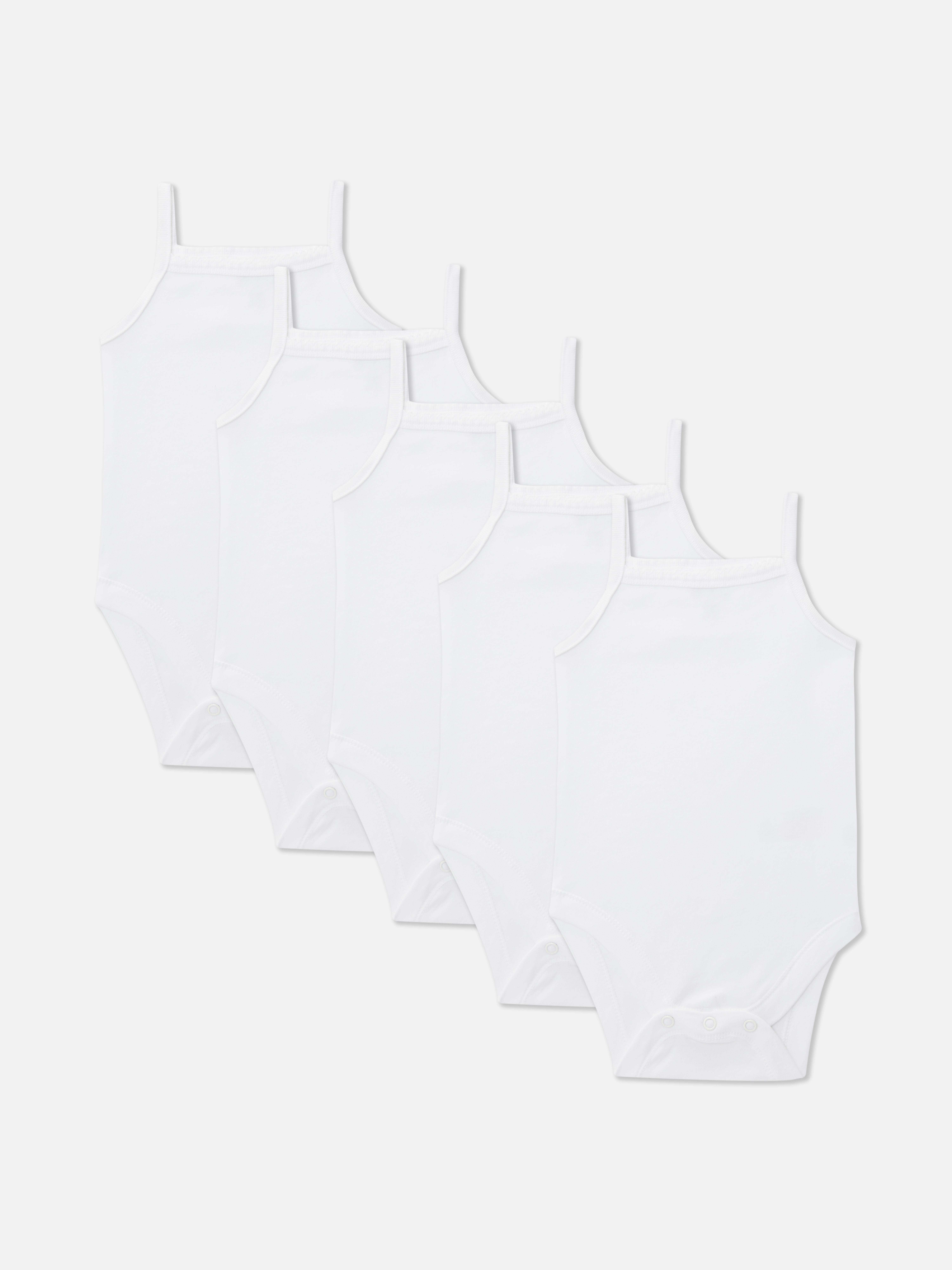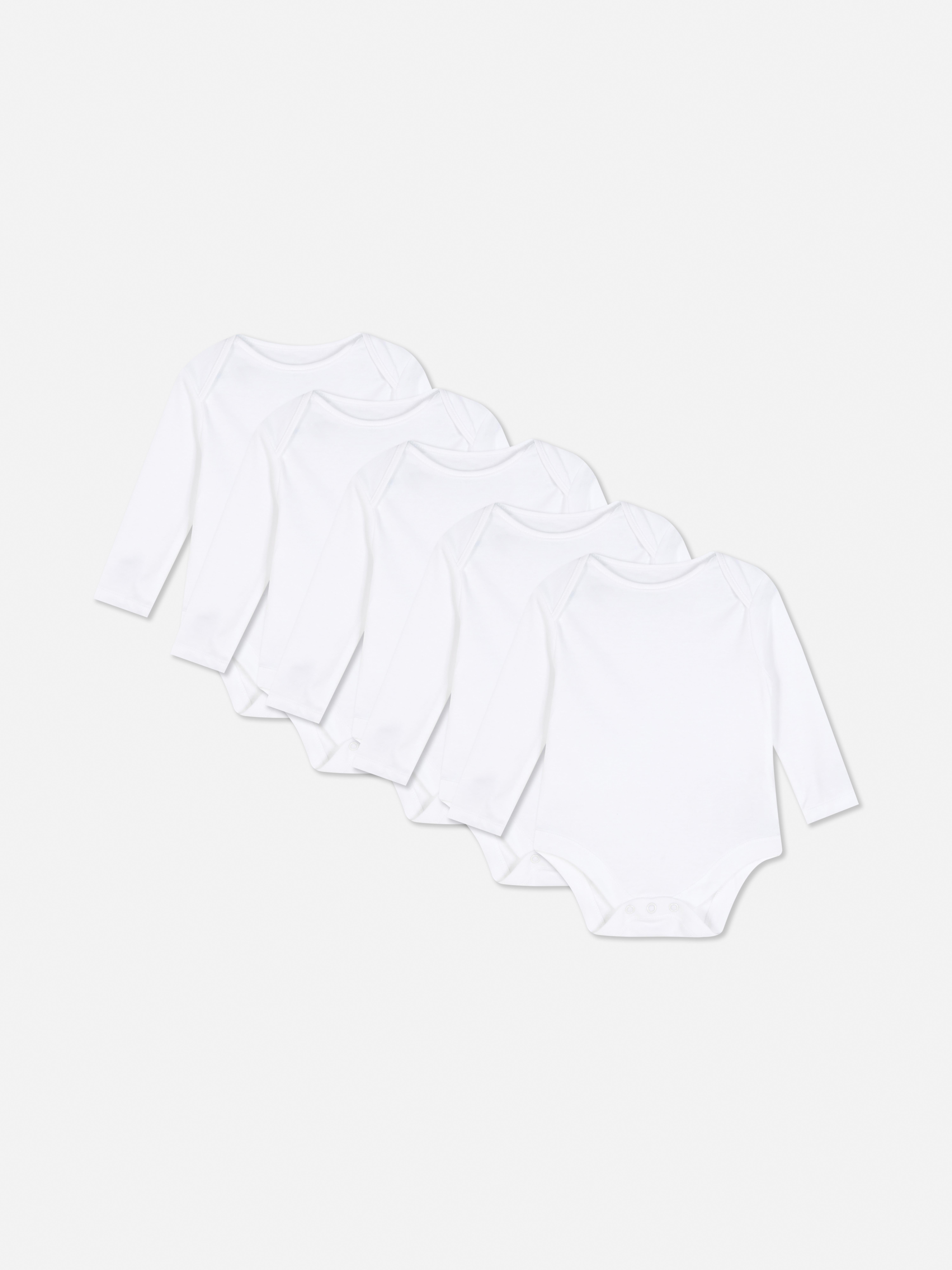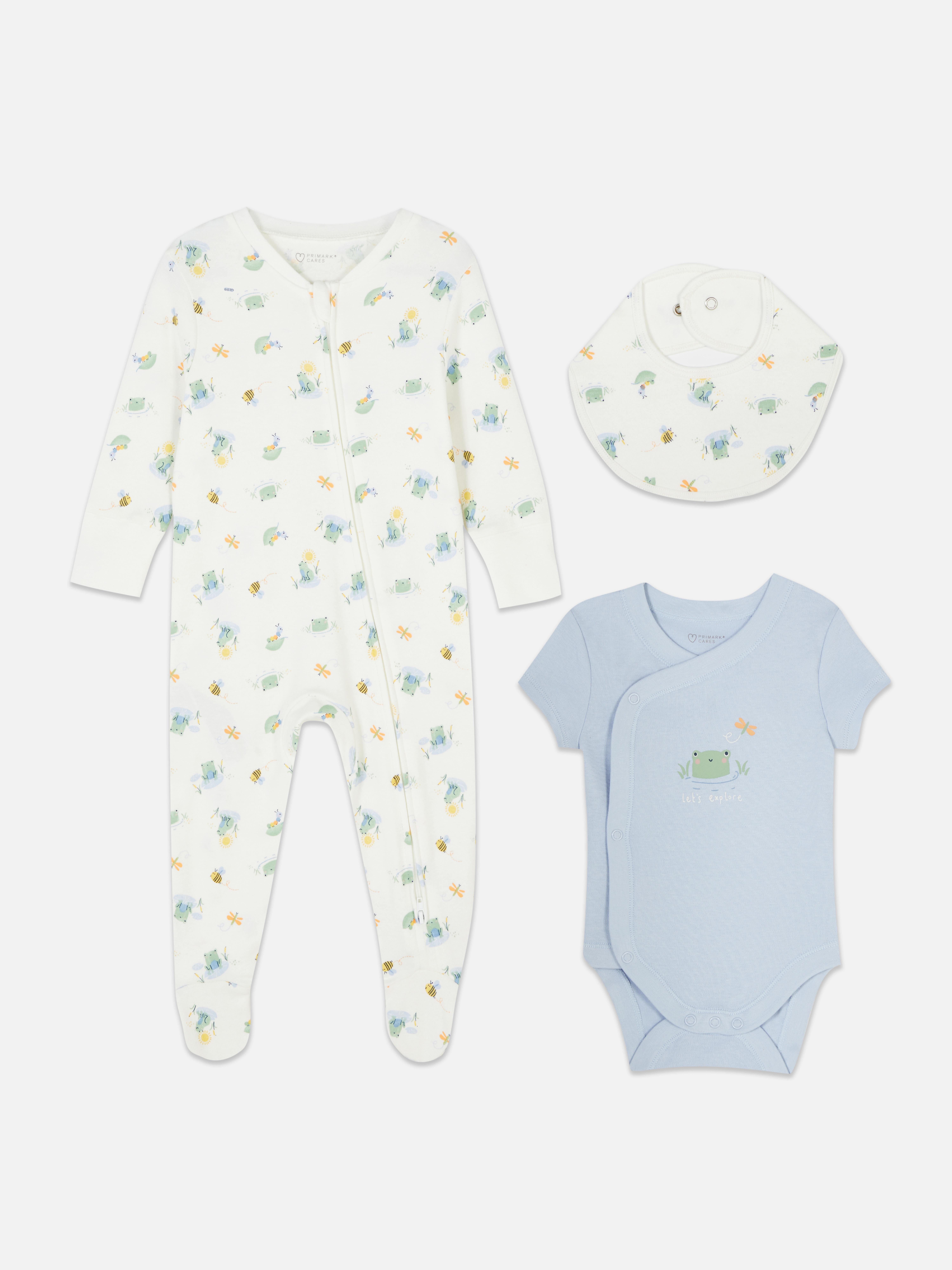What to dress a baby in at night
Figuring out how to dress baby for sleep can be tricky, but it doesn’t have to be! Find out what to dress your baby in based on room temperature.
Bringing your little one home is a whirlwind of cuddles, feeds… and so many questions! Most commonly? What should my baby wear to bed? Whether it's the height of summer or a chilly winter's night, figuring out how to dress baby for sleep can be confusing. But don’t worry, we’re here to help!
What should your baby wear to bed?
Dressing your baby for sleep isn't just about cuteness (though we love snuggly footed pajamas!) It's about comfort, safety, and temperature regulation. Babies can’t regulate their body temperature well, especially in the early weeks, so what they wear really matters.
What’s the difference between a onesie and a footed pajamas, you ask? Check out our handy guide.
Onesies - Baby onesies are a great base layer for sleep. They’re lightweight, breathable, and perfect for pairing with sleep sacks to help regulate your little one’s temperature.
Footed pajamas - Footed pajamass ( are comfy, breathable and a versatile base layer.
Sleep sacks - Sleep sacks keep your baby warm while being safer than a loose blanket.
Blankets - While blankets aren’t recommended for newborns due to the suffocation risk, they can be used safely once your baby is older if tucked in securely under their arms and not over their head.
Baby sleepwear guide
Adapting their sleepwear isn’t about making drastic changes; just a few degrees warmer might mean it’s time to rethink layers. By adjusting their sleepwear with the temperature, you’re helping your baby stay comfy, safe, and well-rested.
Under 16°C: 3.5 TOG sleep sack + footed pajamas + onesie
17°C–20°C: 2.5 TOG sleep sack + footed pajamas
20°C–22°C: 1.0 TOG sleep sack + footed pajamas
22°C–24°C: Footed pajamas
24°C–27°C: Onesie OR 0.2 - 0.5 sleep sack
Use a nursery thermometer to monitor the room’s temperature. Babies sleep best when it's between 16°C and 20°C.
Tips for choosing a baby sleep sack
Choosing the right sleep sack for your baby can make a big difference to their comfort and your peace of mind.
Match the tog to the room temperature, not the season.
Ensure your baby’s head can’t slip through the neck opening.
Pick the right size (not too big, not too tight.)
Look for breathable fabrics like cotton.
How to dress newborn in summer at night?
Hot summer nights? Dress your baby in a lightweight onesie or just a diaper if the room is over 27°C. To avoid overheating, don’t overdress your baby; stick to breathable fabrics and blankets.
How to dress a newborn for sleep in winter?
When temperatures dip below 16°C, use a onesie, footed pajamas, and a heavyweight sleep sack. If the room is chilly, thermal baby sleepwear can help, but avoid hats or hoods at bedtime, since babies release heat through their heads.
What are some other things to consider when dressing my baby for fall?
Fall nights can be unpredictable, so dressing your baby for sleep takes a little extra thought. A room thermometer is a great tool to help you decide how to layer, since room temperature, not outdoor weather, should guide your choices. Start with a heavyweight sleep sack (2.5 TOG) and a footed pajamas. If your baby feels cool on their chest or the back of their neck (not their hands or feet), it’s a sign they might need an extra layer. Always check for signs of overheating too, like damp hair or flushed skin.
How many layers should a baby wear at night?
A good rule of thumb: one more layer than you’re wearing. If you’re sleeping in pajamas with a comforter, your baby might need a footed pajamas and a sleep sack. For younger babies, soft and breathable newborn clothes like cotton onesies or footed pajamas are ideal for layering comfortably and safely.
Signs your baby is too hot while sleeping
Feels sweaty or clammy
Red cheeks or rash
Rapid breathing
Hot chest or neck
If you spot these, remove a layer and check room temperature. Always trust your instincts!
How to tell if baby is cold at night
Cool hands AND chest (hands alone can be misleading)
Unsettled or waking often
Pale skin or cold feet
What should baby wear to bed if they don’t like their sleep sack?
Some babies don’t like sleep sacks. Try layering a onesie and footed pajamas, and use a cellular blanket tucked under the arms and mattress for safety. Swaddling (with proper technique) can also be soothing for younger babies.
When can newborns regulate their temperature?
Most babies start to regulate temperature around 11 weeks, but it can vary. Until then, it’s up to parents/caregivers to help them stay comfortable.
FAQs
What temperature is a 2.5 tog sleep sack for?
- A 2.5 TOG sleep sack is ideal for room temperatures between 16°C and 20°C.
Should I cover my baby’s head at night?
- No! Babies should never sleep with hats or hoods. They cool down through their heads and covering them can cause overheating.
What is the 5-3-3 rule for baby sleep?
- It’s a simple daytime routine: five naps, three-hour intervals, three hours total day sleep. But remember, all babies are different.
What is the 5-10-15 rule for baby sleep?
- This refers to sleep training: leave the baby to self-soothe for five minutes, then ten, then fifteen, before intervening. Always consult with a health professional before starting any sleep training.
What is the 5-8-5 rule for babies?
- This one usually refers to feeding schedules: five-minute breastfeed on one side, eight minutes on the other, then five more on the first side. Again, all babies are different!



